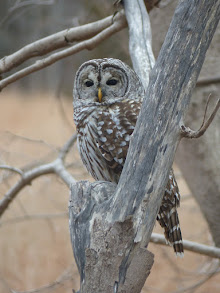
The modest-looking covers of this 80-page paperback conceal a number of curiosities and mysteries within and without, starting with the identity of the book itself, which is actually
The Bleaching Stream by Peter Blegvad "in conversation with Kevin Jackson." The title page, which features an elaborate illuminated red letter "B," informs us that the words "the bleaching stream" are a literal translation of what the name "Blegvad" means in Danish. It also designates Peter Blegvad as the "President of the LIP" (London Institute of 'Pataphysics), an organization which apparently does exist, this being Number 3 of its journal, and identifies his interviewer or interlocutor Kevin Jackson as "Regent of the Collège de 'Pataphysique." The cover date ("Absolu 139 EP") corresponds to Alfred Jarry's 'pataphysical calendar, though in a concession to Gregorian reckoning it also includes "September 2011
vulg." in parentheses. There are actually two monograms on the cover, for in addition to the obvious one of the LIP at the bottom the drawing of a glass of milk (yes, it is milk) in the center slyly incorporates Blegvad's initials.
An introduction is probably in order. Peter Blegvad is, depending on your perspective, either a rock musician and songwriter who also draws, or a cartoonist and graphic artist who also engages in music-making. As a musician he has been a member of such ensembles as Slapp Happy, Henry Cow, and the Golden Palominos, has collaborated on the progressive rock landmark
Kew. Rhone (the lyrics of which contain one of the world's longest palindromes, "Peel's foe, not a set animal, laminates a tone of sleep"), and has written a number of unusually verbally adept songs, including the ineffable "
King Strut." As an artist he is best known for the cartoon strip
Leviathan which ran for several years in the
Independent, though he has always been doodling this and that, both professionally and for his own amusement. The full range of his activity is in fact greater than that, as he has written fiction and essays, delivered lectures ("performances" might be a better word), and compiled various aural collages and "eartoons" which have appeared on the BBC and elsewhere. Born in the US in 1951 (his Danish-born father is a prolific illustrator of children's books, his mother an author), he has lived mostly in Europe since his teens. He is 6' 7", which means that in several photographs included in this volume he is seen looming over everyone else in the frame.
The Bleaching Stream consists of a series of interviews covering Blegvad's childhood, creative activities, influences, and obsessions. The last, which have been remarkably consistent through his life, notably include milk (hence the monogram). Printed on glossy stock, the book is generously illustrated with drawings, photographs, album covers, and ephemera, mostly in black-and-white although there are a couple of color plates. (I haven't attempted to scan any of the interior art, which I couldn't really do without dismembering the book.)
The influence that Alfred Jarry and his disciples have had on Blegvad was not something I was aware of nor would necessarily have suspected, though when you read these pages it all makes good sense. Blegvad mentions, and wears with pride, the fact that he has several times been disparaged by critics or collaborators for his "flippant" attitude; the ludic element has been a constant in his work, whether in the elaborate image-and-text punning of
Leviathan or the droll recitation over Andy Partridge's musical backdrop of the whimsical text of "The Cryonic Trombone," to be included on the forthcoming
Ape House (UK) CD
Gonwards.
Over the years Blegvad has worked with or for a surprising variety of people and enterprises. For a while he drew backgrounds for some books spun off from Charles Schulz's
Peanuts; later he served as a personal assistant to the director Arthur Penn. At one point in the freewheeling mid-1970s he was working with a German record producer who, though Blegvad wasn't aware of it at the time, had ties to the Baader-Meinhof group. His own position, characteristically, is traced out in humor and paradox:
KJ: And you weren't very interested in revolutionary politics?
PB: Everybody was, they were desperate times. But my "politics" came down to basically siding with the underdog. I wouldn't have been able to kidnap an industrialist because that would mean I'd immediately be on his side against me.
Blegvad has long had a following, which, though perhaps never very large, has been enthusiastic and appreciative. (A footnote here mentions that a first pressing of Slapp Happy's debut record recently sold for £1,131.00.) The
Leviathan strips have been collected in a wonderful volume which remains in print, although according to Blegvad it only includes about a third of the total run. Some of his earlier print projects were run off in small numbers and left in restaurant napkin holders and subway cars for people to find by chance. His musical output, both solo and collaborative, has been issued, discarded, re-recorded, and re-issued by a variety of record labels, most of them small and European; my favorite disc (though not everyone's) is the mostly acoustic
Choices Under Pressure. John Relph maintains a useful and admirably comprehensive
discography. Blegvad can be heard as a regular participant in the Radio Free Song Club, a podcast of (mostly) original songs contributed by a variety of songwriters.
The present volume, which has been issued in an edition of 501 copies, is unlikely to bring Blegvad much additional recognition, though it should please, if not the audience he deserves, the audience that is devoted to him. A future LIP volume, collecting Blegvad's "scientific papers," is promised.























